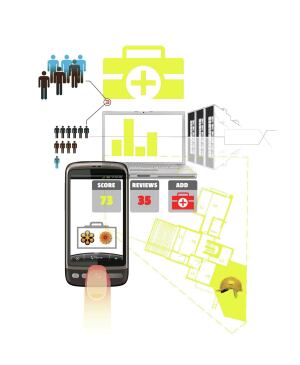
Between unending project demands and the hunt for future commissions, architects are expected to keep up with the ever-proliferating array of software. But which programs are worth the time it takes to learn them? The answer may lie in digital technology itself.
AEC-Apps, a website and social network co-developed by Skidmore, Owings & Merrill (SOM) and Case Design, is a crowdsourced information resource and exchange created specifically for architects, engineers, builders, and designers. The online forum is intended to foster dialogue about the profession’s digital toolkit.
Generally speaking, AEC-Apps combines an open-ended set of available, third-party software applications with an open-minded set of community members. Website users group apps according to their relevance. In turn, these groups of related apps help members find other like-minded members. Users can browse each other’s virtual toolboxes, or “App Kits.” Each app is rated and reviewed by fellow community members and listed alongside plug-ins and other similarly recommended programs. Aggregate or crowdsourced ratings determine the order in which the apps appear. “It’s interesting how social media is being interwoven in our society in areas that we’d never expect,” juror Bill Zahner said.
Interestingly, AEC-Apps—which we had covered in an article listing helpful apps for architects—is conceived not only as a consumer exchange but also as a progenitor of new apps. SOM and Case hope that users will invent or adapt new tools as they identify gaps in the available technology. Here, digital DIY will meet commercial software on a level playing field, with potentially complementary results. Although AEC-Apps is currently in beta testing with a small base of users (membership requires approval by the site’s administrators), its web of knowledge is steadily spreading.
To see all of the winners of the 2013 R+D Awards, click here.
Project Credits
Project AEC-Apps (aec-apps.com)
Design Firm Skidmore, Owings & Merrill, New York; Case Design, New York
Project Leaders Nicholas Holt, AIA (director, Skidmore, Owings & Merrill); David Fano (partner, Case Design)
Project Team Skidmore, Owings & Merrill— Jason Chen, Robert Yori, Assoc. AIA, Robert Mencarini, AIA, Nick Scalco; Case Design—Mike McDearmon, Angel Ceballos, Jose Capelan, Diego Sapriza, Jorge Sierra




















